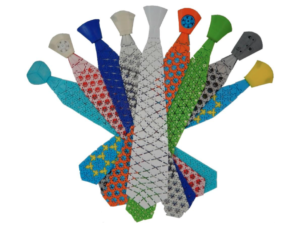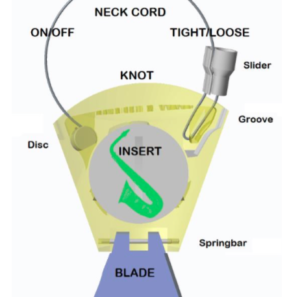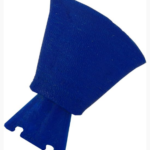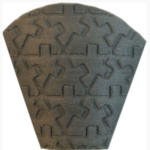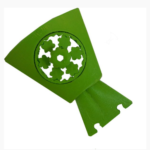In the last few years we have seen some pretty amazing 3D printed clothing, from high fashion to the high tech. But as cool of those designs are, they’re really more marvels of engineering rather than marvels of fashion design. That isn’t to say that a designer’s eye wasn’t an important part of their production, but I was more impressed with the way that the fabric-like materials were 3D printed than the actual clothing. Most 3D printed clothing that we’ve seen, while certainly interesting, doesn’t look especially comfortable, much less wearable. I believe that one day just about everything, including our clothing, will be 3D printed in some way, but based on existing technology, we still have a little ways to go before that happens.
That doesn’t mean that many of these 3D printable textiles are completely unwearable, it just depends on how they’re worn, especially those made on desktop FDM 3D printers. While I doubt anyone would find a 3D printed t-shirt especially comfortable, it turns out 3D printed fabrics can make some pretty great neckties. Software engineer Boris Rabinovich became, by his own admission, a little obsessed with perfecting a 3D printable tie, and went through literally hundreds of iterations in order to get it right. His goal was to create a textile that could be 3D printed on an FDM 3D printer, but would still move and act like a traditional fabric.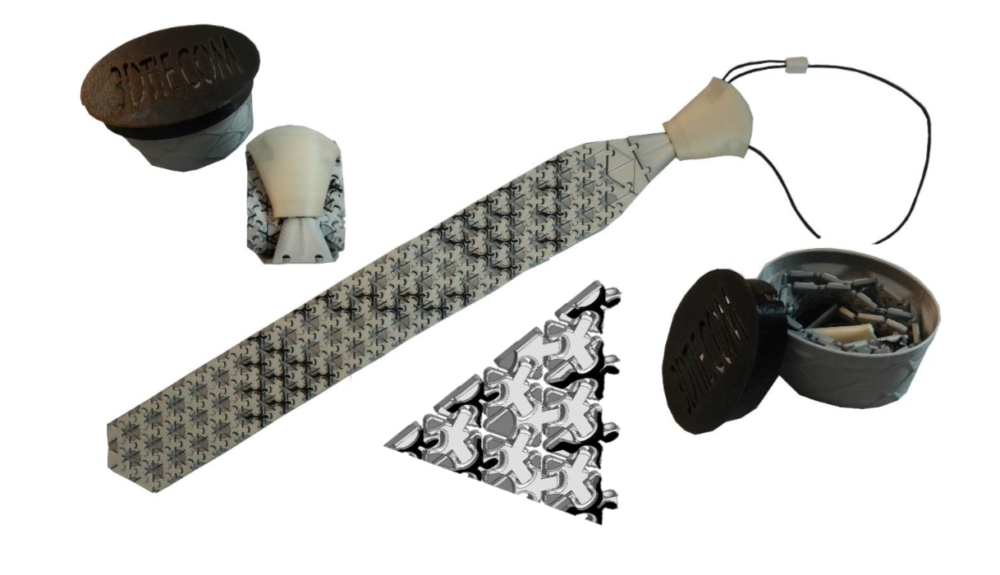
Rabinovich’s latest tie design is probably about as close as anyone is going to get using current FDM technology, and they are pretty incredible. The tie bends smoothly in multiple directions, and it can even be rolled up like a traditional tie. When it is being worn, it will move and bend when sitting down, and straighten itself back out when standing up again. What is even more incredible is the fact that each tie is 3D printed as a single piece, and the only assembly required is attaching it to the 3D printed “knot” that goes around the neck. The tie is remarkably durable and current versions have been tested that can hold up to 45 pounds before breaking, which is incredible.
The remarkably strong 3D printed fabric is made from PLA, and it can really take a beating. In fact, Rabinovich literally gives each tie a beating before he sells it by putting it through a washing machine cycle to test its durability and to make sure that all of the joints are both moving and won’t fall apart. The secret is in the design of the fabric itself, which is made up of a series of symmetrical, repeated tiles connected with special joints that almost resemble puzzle pieces. The joints were designed to offer only a limited amount of flexibility, which allows for the fabrics to move just enough to be rolled up or to simulate real textiles. Finding the specific geometry that would give the textile a natural movement without sacrificing durability and printability was the hardest part of Rabinovich’s design.
“The first iterations came out of printer with tiles stuck together and often breaking before they started moving. Other iterations were falling apart. Some left too much space in between the tiles so that the tie looked transparent. Or edges appeared frayed. Etc, etc. Over time I made a list of requirements, trying to spell out what it means to behave like quality fabric: flexible, rollable, strong, durable, quiet, thin, light, etc., mostly based on user comments. The secret sauce is what happens inside the joints,” Rabinovich told 3DPrint.com.
With the fabric perfected, Rabinovich tuned to making the rest of the tie. To simplify things, the knots are 3D printed separately and then connected using a spring bar, the kind you find in a watch band, so the knot can be changed out at will. The tie is held around the neck with a simple flexible cord that can be adjusted and easily taken on and off. Rabinovich has created two different tie designs: the standard necktie and the skinny tie. There is also an option to customize a 3D printed tie with any of the features and colors that are available.
- Windsor
- Trinity
- Textured
- Holey
The knots are highly customizable, and are available in four styles. There are the traditional Windsor and Trinity knots, plus a Holey knot that was made to hold inserts, like a spinning gear or a custom logo. The newest knot design is the Texture option that shares the basic shape of the Windsor but repeats the triangular pattern of the tie fabric across the knot. Rabinovich is also developing a “tie with an eye” knot called Avi, which will have a small digital camera prominently embedded inside of it.
At well over $100 a piece, Rabinovich is more than aware that his 3D printed ties are on the higher end in terms of price. While maintaining a web store is relatively inexpensive, it is actually quite expensive to produce each tie, but his project isn’t really about creating a viable business, it was about developing functional 3D printed fabrics. Not only does Rabinovich need to factor in the cost of materials to make the tie, but just the 3D printing takes about 24 hours, and then several hours to assemble, test and verify each one. He still continues to refine and develop his 3D printed ties, though, and is currently in talks with a fledgling luxury goods retailer in India.
Rabinovich was kind enough to send me my own 3D printed tie to try out, and I was much more impressed with it than I thought I would be. Were it not for the bold colors and the insert on the knot, the tie he sent me would be almost unrecognizable as being made from plastic. In fact, I actually liked the tie so much that if I had a knot without the gear spinner I would gladly wear it. Obviously a 3D printed tie isn’t for everyone, but if you are required to wear suits regularly and enjoy having brightly colored and unique neckties then I think one of Rabinovich’s is a great investment. You can find out more about purchasing your own 3DTie here. Let’s talk about this cool project over in the 3D Printed Neckties forum at 3DPB.com.
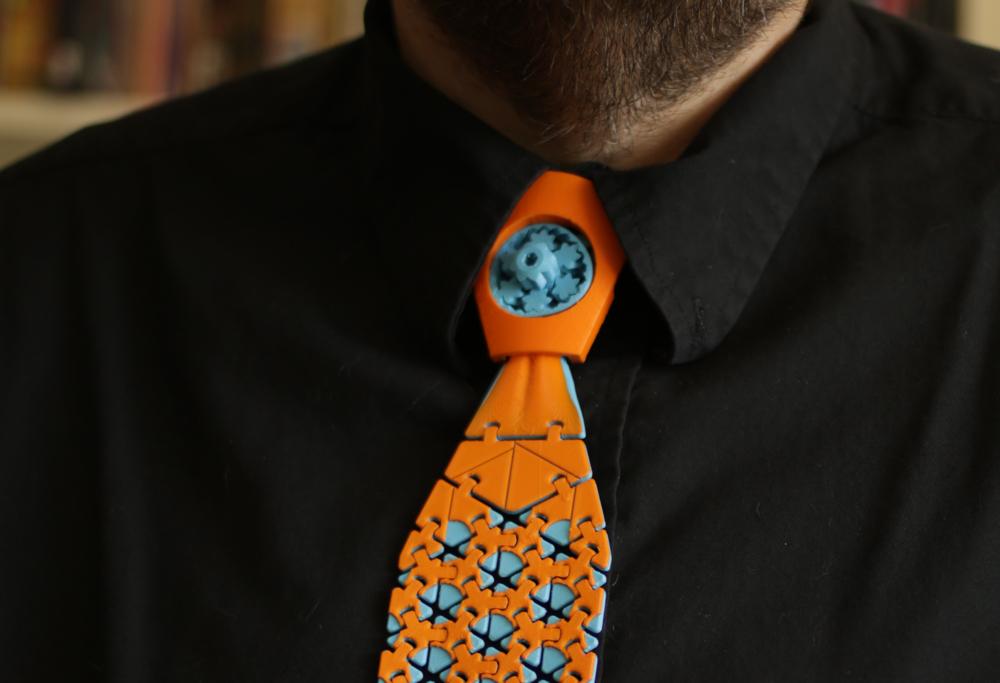
The 3DTie was quite comfortable, and other than the insert was hardly recognizable as being made of plastic.
Subscribe to Our Email Newsletter
Stay up-to-date on all the latest news from the 3D printing industry and receive information and offers from third party vendors.
You May Also Like
3D Printing Webinar and Event Roundup: May 26, 2024
In the weekly 3D Printing Webinar and Event Roundup, ASTM’s AMCOE concludes its professional certificate course, while Solid Print3D will offer a masterclass on Form 4 materials. If you’re in...
Twente Additive Manufacturing: A Construction 3D Printer for Every Task
The additive construction (AC) sector is currently bustling, though not every bit of activity necessarily means it’s thriving. Startups in the space are in the process of getting off the...
3D Printing Webinar and Event Roundup: May 19, 2024
This week, Stratasys continues its advanced training and starts its Experience Stratasys tour across the United States. ASTM’s AMCOE continues its professional certificate course, and SPE is offering a workshop...
SPEE3D Releases Expeditionary Manufacturing Unit for Cold Spray 3D Printing
SPEE3D, the Australian original equipment manufacturer (OEM) of cold spray additive manufacturing (CSAM) systems, has released an end-to-end deployable production unit for metal parts. The new product, called the Expeditionary...


